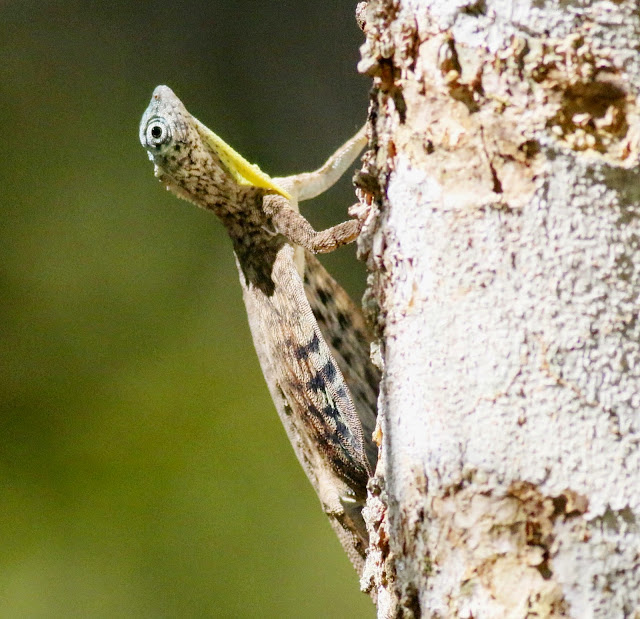As the earthly things unfurled around us nowadays you may realised that this planet is actually divided between the 'believers' and the 'non-believers', the 'haves' and the 'have nots', the 'rights' and the 'lefts' etc etc. In politics there are no such things as the middle kingdom. Its like you choose either 'MU' or 'Liverpool', 'tosai' or 'nasi lemak', 'LA Lakers' or 'Boston Celtics' or simply either 'Letchumi' or 'Minachi'. It looks like even radio DJs are into it - seek a new life Ben ! However unlike humans, birds have no preferences. To them its either survive or perish !
It goes the same for these stinking bugs too.
Even at noon surely there are some birds out there as i asked myself. As the nation is undergoing some transformation, this place is experiencing some changes too. If you have been to Nuang recently you can see that the trails have been cemented from the base to the top. I could still smell the cement at that time and now one could just ride their scramblers right up to Camp Lolo. I fear for the worst but luckily the common birds and some not so common ones are still out there even at such odd birding time.
In the afternoons most of the birds will be hiding far inside the shades and these are some of the things you should be aware off when birding during those hours. I believe the bird on the left was a Buff Vented Bulbul while the bird on the right was a Puff -Backed Bulbul.
 |
| Little Spiderhunter |
This is the whistle blower of the jungle. It will alert other birds if it sees any uncommon visitors even for such as an appearance of a black giant squirrel.
 |
| Raffles's Malkoha |
Much smaller in size than other malkohas and its calls were like the sounds made by a cat. Pictured here is most likely a sub-adult male.
 |
| Buff-Necked Woodpecker |
It seems that this woodpecker can be seen more often in between April to June.
You might probably have a hard time guessing the above bird under such light.
 |
| Large Woodshrike |
Unless until it moves into a shade. Here is a male Large Woodshrike based on the greyish color of its head. It does hawks for insects but unlike flycatchers it does not fly back to the same branch after hawking the insects as observed here. Its true identity however is still under scrutiny by scientist as some research have reported that its DNA is closer to those of flycatchers (or the family of Prionopidae).
Note: i have also recorded its calls which was taken inside a very low and thick foliage - just like the usual spots where you might find a common tailor bird or some pin stripped tit babblers. Due to the location of its call i had some hard time figuring out its calls until a veteran birder assisted me. What was it doing inside a low foliage is anyone guess but i believe it was probably looking for bugs rather than building a nest there - this can be further validated.
If you have done sky diving or base jumping, you will usually jump first and then open the chutes later. This was exactly what this Blue-Eared Barbet did. It was seen diving head-on first and then open its wings a few seconds later.
 |
| Blue-Eared Barbet |
Although its size is just slightly larger than a Black-and-Yellow Broadbill, its calls especially its first calls were really loud. Despite its common status here, most of the time you will hear its calls rather then seeing it. This time it has decided to come out in the open.
Did u say something about my big mouth?
Oriental Magpie Robin is a common bird down here.
This was a surprise find. Although other birders have reportedly seeing Oriental Pipits at this location but this was the first time i have personally seen it here. It could have resemble other pipits if not for its longer beaks and yellow base etc
The location where they were seen was just a small patch of greens but i guess they don't mind it. It shows that they do not have any special preference for an open field to forage.
There were two of them and this one here was probably saying "wow what a feeling" while enjoying the sun rays. From the looks of their behavior like sun bathing and staying alert towards their surroundings, they might have just landed when i saw them.
My other half has lost her job recently due to company's restructuring exercise so there will be less birding trips for me which mean less postings as well. Hopefully she can find a part time work to sustain the family. As you can see some of the photos presented here were nothing spectacular as compared with other fellow birders but the field info presented here will hopefully be of some importance to the field of ornithology.
Happy Birding!






































































